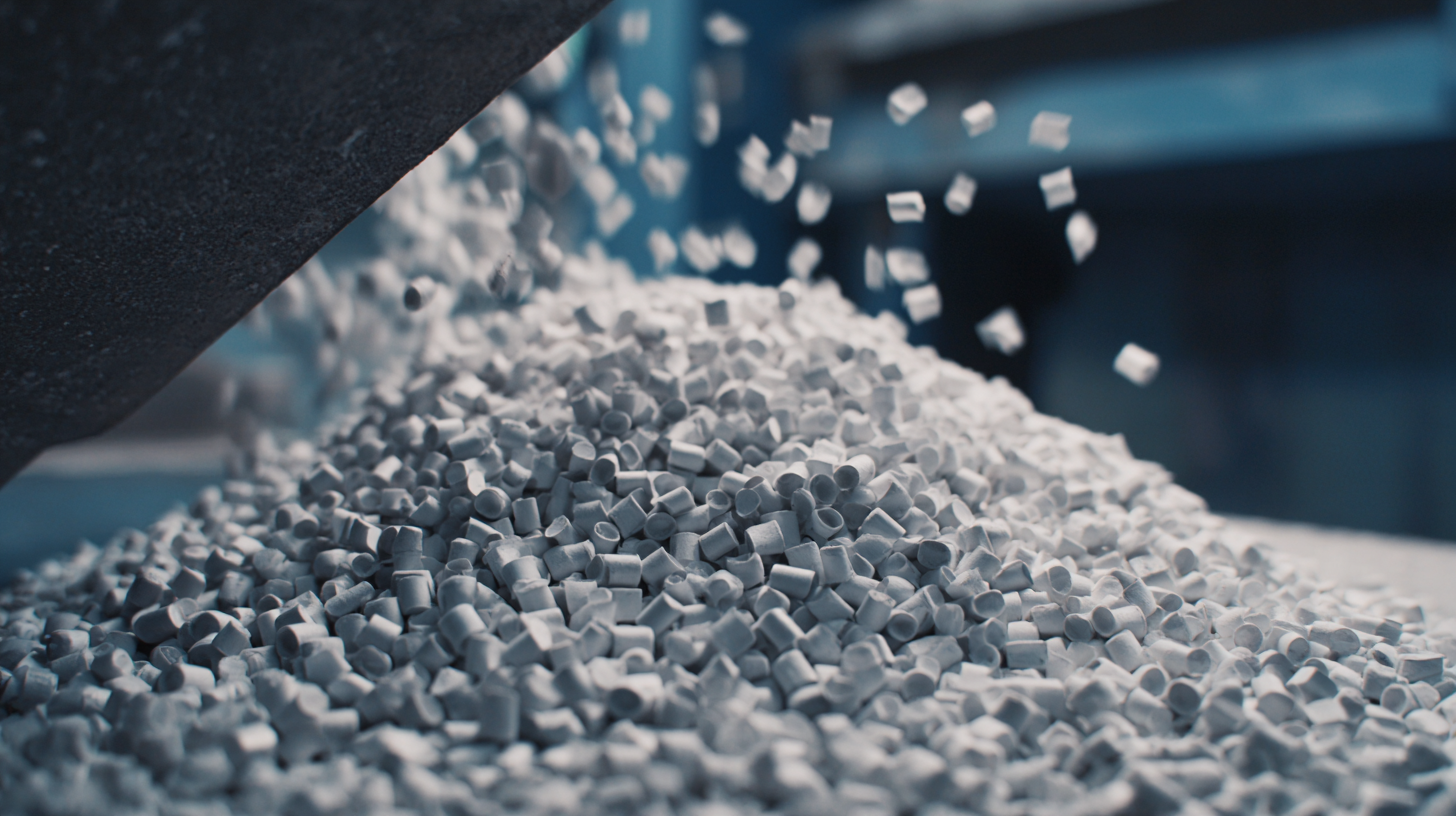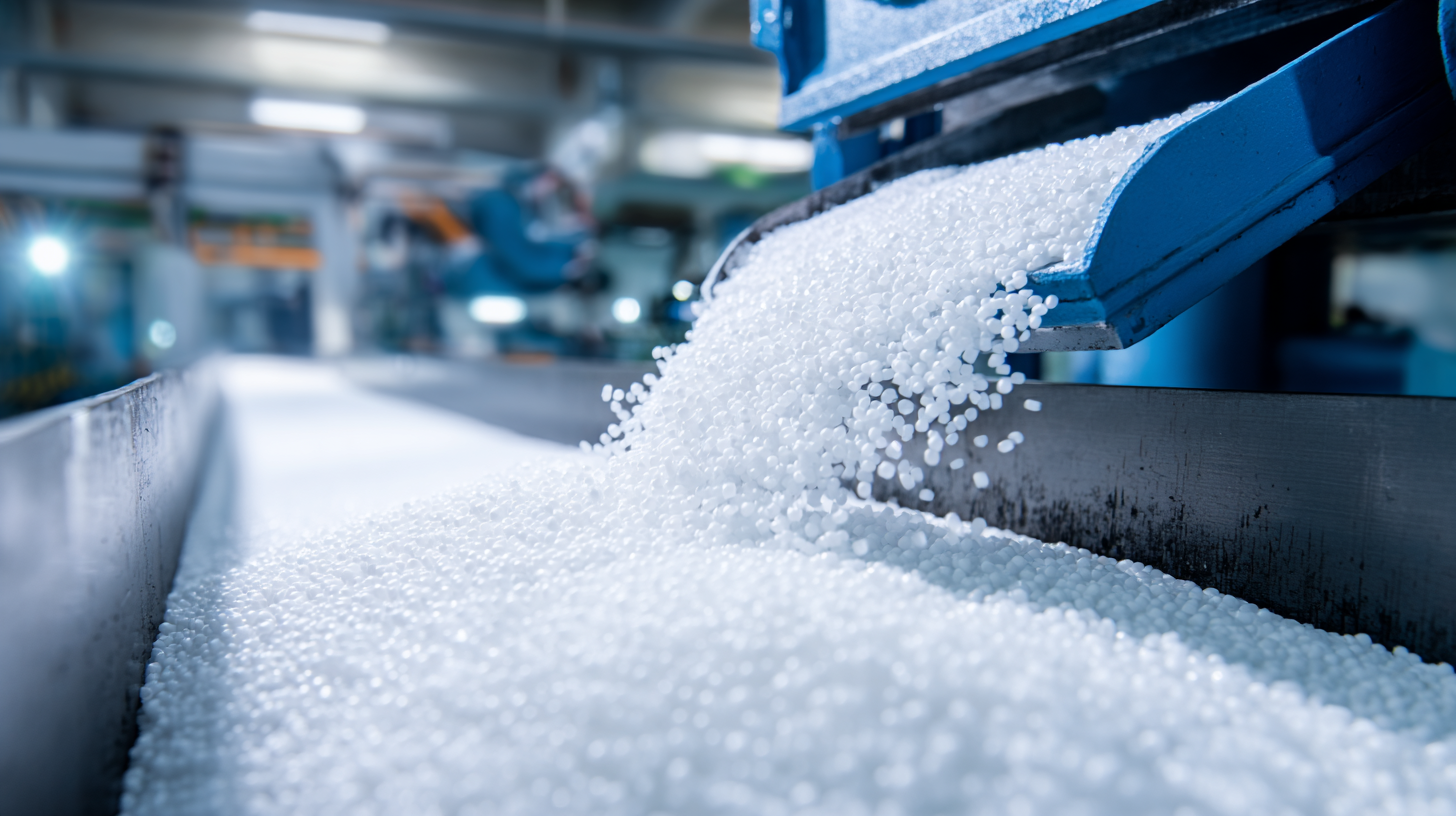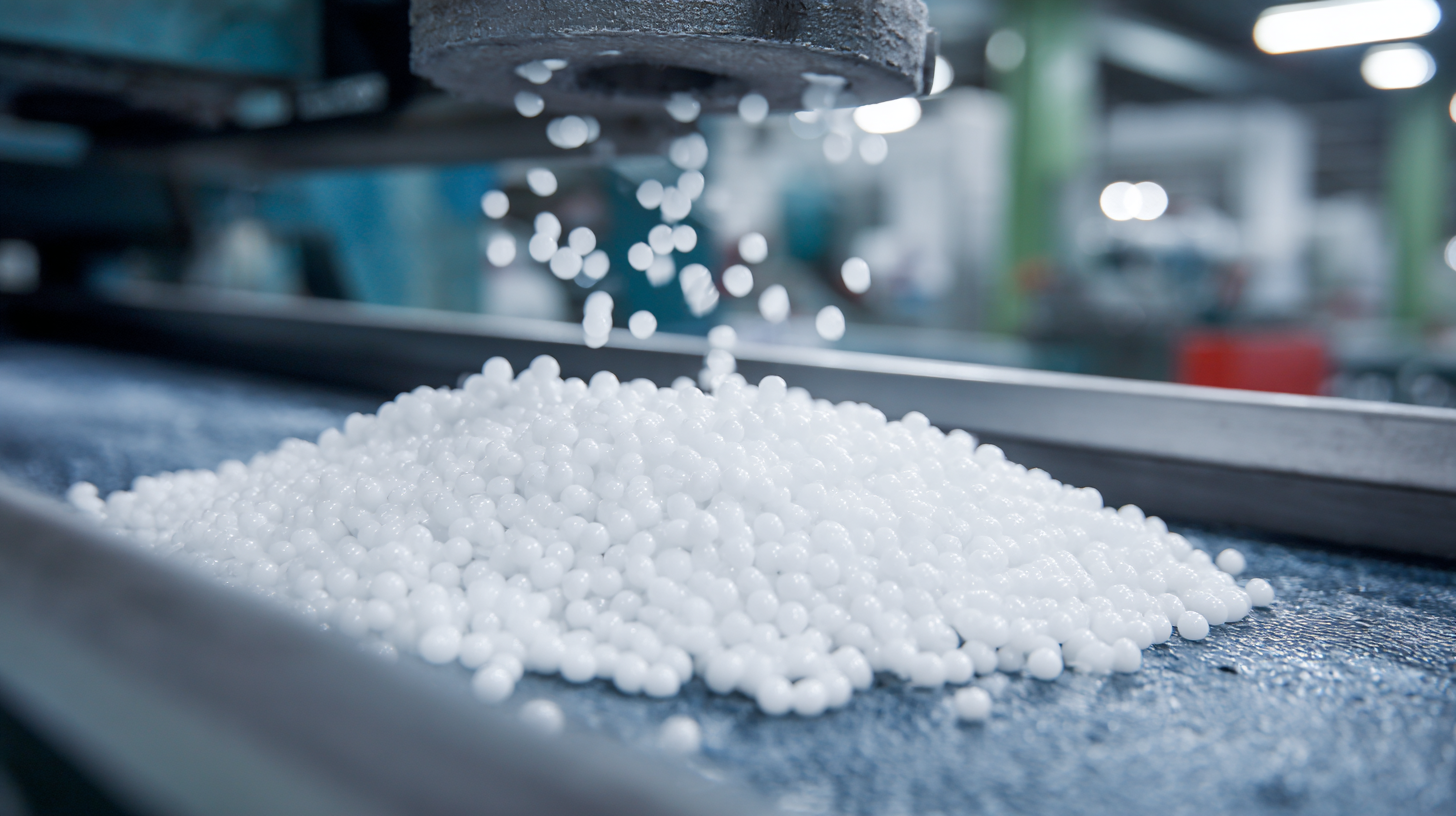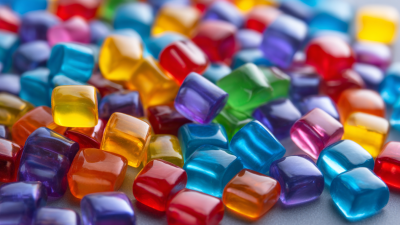- Home
- Masterbatch
- Additive Masterbatch
- Anti-Block Masterbatch
- Anti-Fog Masterbatch
- Anti-Microbial Masterbatch
- Anti-Oxidant Masterbatch
- Anti-Static Masterbatch
- Anti-Termite & Rodent Masterbatch
- Desiccant / Anti-Moisture Masterbatch
- Optical Brightener Masterbatch
- Flame Retardant Masterbatch
- Slip Masterbatch
- Polymer Processing Aid (PPA) Masterbatch
- UV Masterbatches
- VCI Additive Masterbatch
- Filler Masterbatch
- Black Masterbatch
- White Masterbatch
- Color Masterbatch
- Mono Masterbatches
- Special Effect Masterbatches
- EVA Masterbatch
- OXO Biodegradable Masterbatch
- XLPE Masterbatch
- Cable Masterbatch
- Nylon Masterbatch
- TPU Masterbatch
- Additive Masterbatch
- Compound
- Market
- Company
- Blog
- Contact Us
The Role of White Masterbatch in Enhancing Sustainable Plastic Solutions
 In the quest for sustainable plastic solutions, the role of white masterbatch has emerged as a pivotal element in enhancing the performance and environmental impact of plastic products. As industries increasingly seek to reduce their carbon footprint and embrace eco-friendly practices, white masterbatch offers a unique combination of benefits that align with these objectives. This concentrated mixture of additives not only improves the opacity and brightness of plastics but also enhances their recyclability and overall durability.
In the quest for sustainable plastic solutions, the role of white masterbatch has emerged as a pivotal element in enhancing the performance and environmental impact of plastic products. As industries increasingly seek to reduce their carbon footprint and embrace eco-friendly practices, white masterbatch offers a unique combination of benefits that align with these objectives. This concentrated mixture of additives not only improves the opacity and brightness of plastics but also enhances their recyclability and overall durability.
The significance of white masterbatch extends beyond mere aesthetic enhancement; it plays a crucial role in reducing the need for excessive pigment and fillers, thereby minimizing waste and resource consumption. With sustainability at the forefront of global manufacturing practices, understanding the top ten contributions of white masterbatch to sustainable plastic solutions becomes essential for stakeholders in the industry. This article delves into these contributions, showcasing how integrating white masterbatch into plastic production processes can lead to more sustainable and efficient outcomes, benefiting both manufacturers and the environment.
The Importance of White Masterbatch in the Plastics Industry
White masterbatch plays a crucial role in the plastics industry, serving as a vital additive that enhances the properties and performance of various plastic products. According to a recent industry analysis, the demand for white masterbatch is projected to grow at a CAGR of 5.4% between 2022 and 2027, reflecting its importance in producing high-quality, visually appealing plastics. White masterbatch improves opacity, brightness, and color consistency, making it an essential component in applications ranging from packaging to automotive parts.
Tips: When selecting a white masterbatch, consider the specific needs of your application. Different formulations can provide varied benefits such as UV resistance or increased thermal stability, so working closely with your supplier to find the right masterbatch is key.
Additionally, the use of white masterbatch can contribute to sustainable plastic solutions. By enhancing the recyclability of plastics and allowing manufacturers to reduce the amount of resin used in products while maintaining performance, white masterbatch can support a circular economy. Reports indicate that incorporating masterbatches in recycling processes can improve yield by up to 20%, promoting more sustainable practices in the plastics industry.
Tips: Always check for eco-friendly certifications when selecting a white masterbatch. This can ensure that your production aligns with sustainability goals and meets regulatory standards.
Understanding Sustainable Plastic Solutions and Their Benefits
 Sustainable plastic solutions are increasingly crucial in addressing environmental challenges associated with plastic waste. These solutions encompass innovations in packaging that reduce reliance on traditional plastics, promote reuse, and enhance recyclability. Current trends emphasize the importance of mechanical recycling as a pivotal method in transforming plastic waste into valuable resources, thus supporting a circular economy. This approach aligns with the growing demand for sustainable practices across various industries, particularly in food packaging, where the shift towards eco-friendly materials has gained significant momentum.
Sustainable plastic solutions are increasingly crucial in addressing environmental challenges associated with plastic waste. These solutions encompass innovations in packaging that reduce reliance on traditional plastics, promote reuse, and enhance recyclability. Current trends emphasize the importance of mechanical recycling as a pivotal method in transforming plastic waste into valuable resources, thus supporting a circular economy. This approach aligns with the growing demand for sustainable practices across various industries, particularly in food packaging, where the shift towards eco-friendly materials has gained significant momentum.
Companies are actively exploring and implementing strategies to tackle packaging waste, with commitments to ensure that none of their packaging materials end up in landfills. This focus not only drives environmental benefits but also enhances operational efficiencies within businesses. The expansion of the sustainable plastic packaging market reflects a broader shift towards adopting reusable options and innovative solutions that prioritize both environmental sustainability and consumer convenience. As awareness increases, the transition toward sustainable packaging solutions will play a vital role in reducing plastic pollution and fostering a more sustainable future.
How White Masterbatch Improves Material Efficiency and Reduces Waste
White masterbatch plays a crucial role in enhancing the efficiency of plastic materials, which aligns well with the industry's increasing focus on sustainability. Research from the European Plastics Converters (EuPC) indicates that masterbatches can help reduce the amount of virgin plastic required in manufacturing processes by up to 30%. By incorporating white masterbatch, manufacturers improve the opacity and brightness of their plastic products while simultaneously minimizing the overall material usage, leading to a more efficient production cycle.
Moreover, the use of white masterbatch contributes significantly to waste reduction. A study by the Plastics Industry Association (PIA) estimates that incorporating masterbatches can reduce scrap rates by approximately 25%. This reduction not only lowers material costs but also diminishes the environmental impact associated with excess waste. As the industry pushes towards a circular economy, adopting solutions like white masterbatch becomes a critical step in optimizing material efficiency and minimizing ecological footprints in plastic production.

The Role of White Masterbatch in Enhancing Product Aesthetics
White masterbatch plays a pivotal role in the aesthetics of plastic products, significantly enhancing their visual appeal and consumer attractiveness. According to a report from the Plastics Industry Association, incorporating white masterbatch can increase the brightness and opacity of plastics, making them more appealing to consumers. This is particularly vital in competitive markets where product differentiation is key. With the right formulation, white masterbatch not only improves the finish of plastic surfaces but also allows for vibrant colors and better design flexibility, making it an essential ingredient in industries ranging from consumer goods to packaging.
Moreover, the use of white masterbatch contributes to sustainable plastic solutions by improving processing efficiency. The LyondellBasell Sustainability Report indicates that the integration of these masterbatches can reduce the amount of resin needed per unit, minimizing waste during production. By enabling lighter and more evenly distributed materials, manufacturers can reduce overall material costs while maintaining, or even enhancing, product aesthetics. This dual benefit of improving visual quality while promoting a more sustainable approach makes white masterbatch a valuable asset in the evolving landscape of plastic production.
The Role of White Masterbatch in Enhancing Sustainable Plastic Solutions - The Role of White Masterbatch in Enhancing Product Aesthetics
| Aspect | Description | Benefits | Sustainability Impact |
|---|---|---|---|
| Color Consistency | Provides uniformity in color across various batches. | Enhances product appeal and brand recognition. | Reduces waste by minimizing off-spec products. |
| Opaque Finish | Gives products a solid and high-quality appearance. | Increases perceived value of the product. | Improves recyclability due to increased material purity. |
| UV Stability | Protects pigments from harmful UV rays. | Extends product life in outdoor applications. | Reduces the need for replacement products. |
| Cost Efficiency | Optimizes material use and processing costs. | Increases profit margins for manufacturers. | Supports sustainable production practices. |
| Processing Performance | Improves flow and finish of plastic during production. | Reduces defects and enhances product quality. | Promotes efficient manufacturing with less energy use. |
Innovations in White Masterbatch Technology for a Greener Future
The innovations in white masterbatch technology play a critical role in promoting sustainable plastic solutions. White masterbatch, primarily made of titanium dioxide (TiO2), is used to enhance the opacity and whiteness of plastics, making them more visually appealing and functional. According to a recent report by Smithers Pira, the global demand for masterbatch is expected to reach 4.73 million tons by 2024, driven by the need for more sustainable alternatives in various industries, including packaging and automotive.
Recent advancements have focused on producing white masterbatches that utilize recycled materials and bio-based components. Companies like Cabot Corporation are pioneering the development of eco-friendly masterbatches that reduce carbon footprints by integrating post-consumer recycled (PCR) content. Industry reports indicate that utilizing PCR in manufacturing could cut greenhouse gas emissions by up to 50%, contributing significantly to a circular economy. Furthermore, the introduction of low-energy processing techniques not only conserves energy but also minimizes emissions during production, aligning with the growing demand for greener alternatives in the plastics market.
Related Posts
-

Exploring the Benefits of Using White Masterbatch in Sustainable Plastic Production
-

Exploring the Future of EVA Masterbatch: Trends and Innovations in Polymer Additives for 2024
-

Understanding the Benefits of Anti Static Plastic in Electronics Packaging
-

Unlocking the Future of Plastics: How Anti Block Masterbatch Enhances Packaging Performance
-

Revolutionizing Repair: Understanding the Science Behind Plastic Fillers and Their Environmental Impact
-

Discover How Slip Masterbatch Revolutionizes Plastic Processing Efficiency
